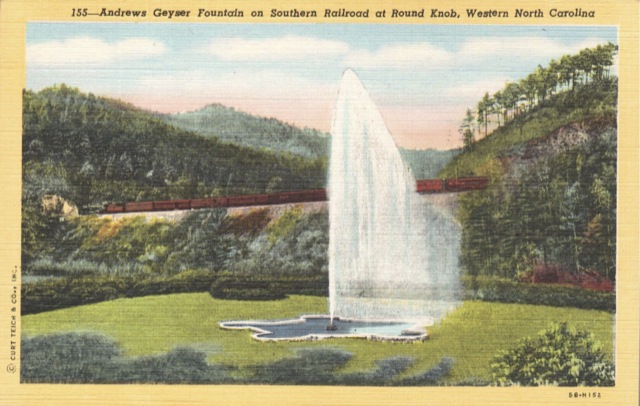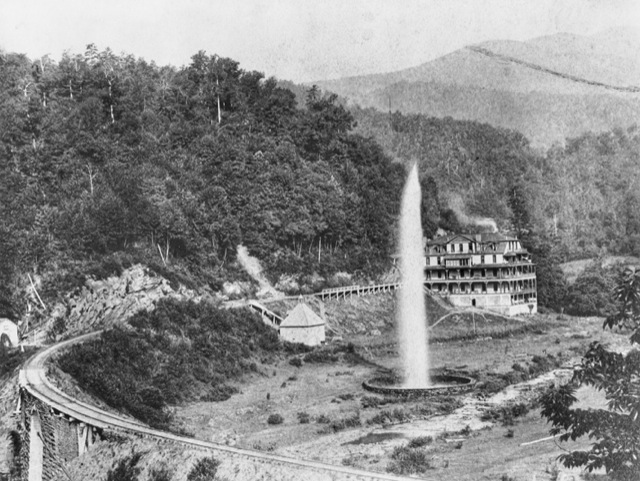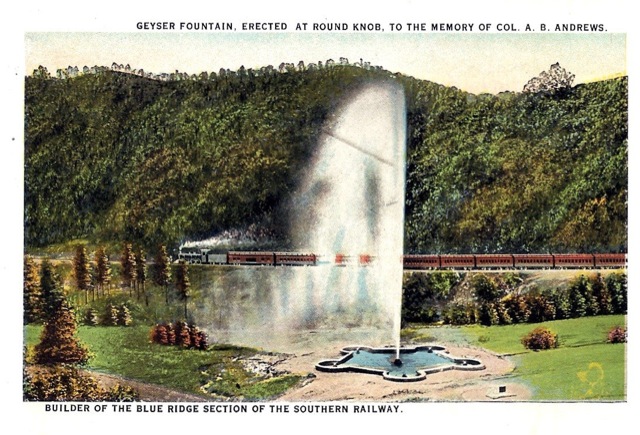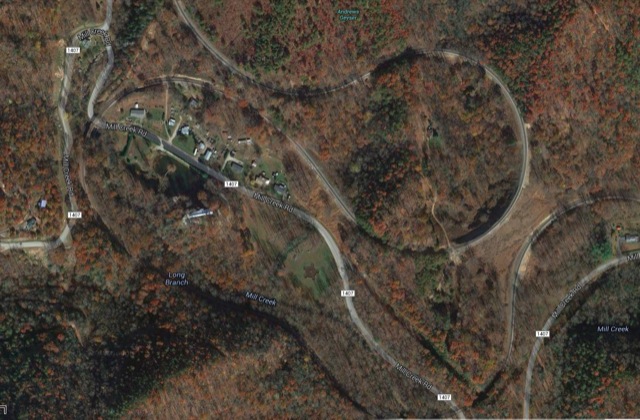In the early 1880s, 120 construction workers (many of them prisoners provided by the state of North Carolina as a subsidy to rail construction) lost their lives build a railroad from Old Fort to Asheville, North Carolina. As a memorial to these men and also as a tourist attraction for the Round Knob Hotel, the Southern Railway erected a fountain that continuously sprayed water at least 80 feet into the air.

Click image to download a PDF of this postcard.
As shown in the photo below, the Round Knob Hotel was right next to the railroad tracks (which must have been noisy) and just a short walk from the fountain. The fountain itself was fed by a dam two miles and 500 feet in elevation higher than the fountain.

Click image for a larger view.
The hotel burned in 1903 and the fountain fell into disrepair. In 1911, a wealthy banker named George Baker paid to have the fountain restored and named it after his friend, Southern Railway vice-president Alexander Boyd Andrews, who–ironically–had helped oversee the construction that killed so many men. Since the fountain had been on railway-owned land and the railway would not give Baker an easement to use the land, he moved it about 70 yards away and built a star-shaped basin around it. Photos of the fountain surrounded by the star date from after this restoration.

Click image for a larger view.
The fountain still exists today and the star-shaped basin is visible just below the center of the aerial photo below. As shown in the photo, the rail route was so circuitous that it required 12 miles of track to go 3 miles and passengers on both sides of a train were able to get many looks at the “geyser.” The rail line is still there but has been used only for freight since the 1960s (though there was at least one steam excursion in 2013). Today, the geyser is maintained by the owners of the Inn on Mill Creek.

Click image for a larger view.
Modern accounts place the height of the fountain at 80 feet. But it looks much higher than that in the photo of the Round Knob Hotel above. I suspect the fountain as built by the railway was much higher than the one restored by Baker in 1911 and restored again by the Inn on Mill Creek in the 1970s. Alternatively, it is possible that postcard makers retouched the Round Knob Hotel photo to exaggerate the height of the fountain.

pdf links are broken